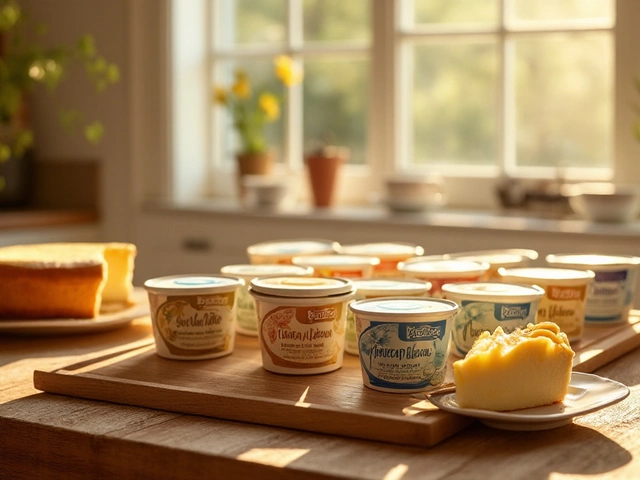Making Fudge: Simple Steps for Smooth, Delicious Candy
If you've ever tried to melt chocolate and sugar into a glossy blob that hardened into chalk, you know how frustrating fudge can be. The good news? Most fudge failures come down to three things: temperature, timing, and technique. Below you’ll find a no‑nonsense guide that covers everything from picking the right ingredients to fixing common problems, so your next batch turns out buttery and velvety.
Pick the Right Base
Start with a classic combination of sugar, butter, and milk or cream. A typical ratio is 2 cups of granulated sugar, 1/2 cup of butter, and 1/2 cup of milk. Adding a splash of vanilla at the end lifts the flavor, and a pinch of salt balances the sweetness. For a richer bite, swap half the milk for heavy cream – it gives a silkier texture without extra effort.
Control the Heat
The magic happens when the mixture reaches the "soft‑ball" stage, about 235‑240°F (112‑115°C). Use a digital thermometer; it’s the cheapest way to avoid guesswork. Stir constantly while the sugar dissolves, then let it boil without stirring until you hit the right temperature. If you overshoot and hit the "hard‑ball" stage (250°F+), the fudge will turn grainy and hard.
Once the temperature is right, remove the pot from heat and let it sit for a minute. Drop in the vanilla, any flavor extracts, or add‑ins like nuts or chocolate chips. Now comes the crucial part: beat the mixture.
Beat for the Perfect Grain
Using a sturdy wooden spoon or an electric mixer on low, beat the fudge until it loses its shine and thickens. You’ll see the surface become dull and start to pull away from the sides of the pan. This usually takes 3‑5 minutes by hand, or 1‑2 minutes with a mixer. Don't over‑mix – once the fudge looks glossy again, it's overcooked.
Spread the fudge into a greased 8×8‑inch pan, smooth the top, and let it cool completely at room temperature. Cutting while warm will give messy squares; wait until the fudge is set firm.
Troubleshooting Common Issues
Grainy texture: Most often caused by boiling past the soft‑ball stage or not beating enough. Re‑heat gently and beat longer, or start over with a fresh batch.
Too soft or runny: The temperature was too low. Use a thermometer next time and ensure the mixture reaches at least 235°F.
Crystallized surface: This happens when the sugar crystals form too early. Adding a small amount of corn syrup or glucose can help keep the sugar in solution.
Storing Your Fudge
Wrap each piece in parchment paper, then store in an airtight container. At room temperature, fudge stays fresh for up to two weeks. For longer storage, refrigerate – it won’t change the flavor, just firm up a bit. You can also freeze fudge for up to three months; just thaw it in the fridge before serving.
Now you have a clear roadmap to making fudge that tastes like it came from a candy shop. Grab your ingredients, fire up that thermometer, and get ready to enjoy buttery squares that melt in your mouth. Happy fudging!






